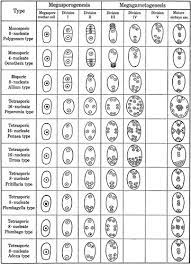Theories of Linkage:
Theories of Linkage:
VIEWS OF CLASSICAL GENETICISTS ON LINKAGE:
Mendel could not notice the phenomenon of linkage because
fortunately the seven pairs of factors or alleles studied by him in pea were
located on seven different pairs of chromosomes. It was noticed and discovered
by some other post-Mendelian geneticists who during their genetic
investigations came across to linked genes. The evolution of linkage concept
took place by the views of following classical geneticists:
1. SUTTON'S VIEWS ON LINKAGE:
Sutton (1903) was the first classical geneticist who made
certain predictions about the linkage merely by performing certain cytological
investigations. He suggested that each chromosome must bear more than a single
gene and that the genes represented by one chromosome must be inherited
together. However, he could not prove his predictions by genetic experiments.
2. COUPLING AND REPULSION HYPOTHESIS OF BATESON AND PUNNETT :
Bateson and Punnett (1905-1908) formulated the 'hypothesis
of coupling and repulsion' to explain the unexpected F, results of a dihybrid
cross between a homozygous sweet pea (Lathyrus odoratus) having a
dominant alleles for blue or purple flowers (BB) and long pollen grains (LL)
with another homozygous double recessive plant (bbll) with red flowers and
round pollen grains. When they test crossed a heterozygous blue or purple long
(BbLl) plant with recessive parent (bbll), besides getting the 1:1:1:1 test
cross ratio, they received phenotypic ratio of 7:1:1:7 as has been illustrated
here:
Hence, the two dominant pairs of alleles repelled each other. The tendency of both dominant or both recessive alleles to repel each other, so that the gametes of genotypes of Bl and bL are formed more frequently, was termed repulsion. Bateson and Punnett could not explain the exact reasons of coupling and repulsion, and it was T.H. Morgan who while per forming experiments with Drosophila, in 1910, found that coupling or repulsion was not complete. He further suggested that the two genes are found in coupling phase or in repulsion phase, because they are present on the same chromosome (coupling) or on two different homologous chromosomes (repulsion). Such genes are then called linked genes and the phenomenon of inheritance of linked genes is called linkage by Morgan.
3. MORGAN'S VIEWS ON LINKAGE:
Morgan stated that the pairs of genes of homozygous parent tend to enter in same gametes and to remain together, whereas same genes from heterozygous parents tend to enter in different gametes and remain apart from each other. He further stated that the tendency of linked genes remaining together in original com bination is due to their location in same chromosome. The degree or strength of linkage depends upon the distance between the linked genes in the chromosome. Morgan's concept about the linkage developed the theory of linear arrangement of genes in the chromosomes which helped the cytogeneticists in the construction of genetic or linkage maps of chromosomes.
4 . Differential Multiplication Theory:
Bateson (1930) assumed that linkage is due to the
differential multiplication of cells containing different combinations of
genes. After the segregation of genes during gamete formation, the set of
gametes possessing parental combinations multiplies rapidly than the set having
non-parental combination. This theory was disproved because after segregation
of genes, there is only one division.
5. Chromosome Theory of Linkage:
Morgan and Castle proposed the chromosomal theory of link.
age. The main features of the chromosomal theory of linkage are the following:
1. The genes are arranged in a linear fashion on the
chromosomes.
2. The genes on a chromosome are linked
3. Genes showing linkage are located on the same chromosome
4. Linked genes will remain together during inheritance.
5. The distance between the genes will determine the
strength of linkage. The closely located genes show strong linkage. Distantly
located genes show weak linkage.




Comments